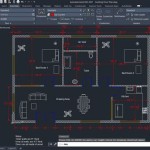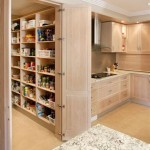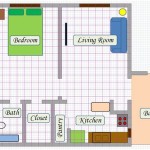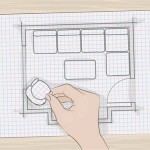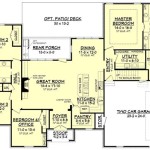A laundry area floor plan refers to the layout and design of a dedicated space within a home specifically designated for laundry-related activities. This floor plan is crucial for maximizing functionality, efficiency, and convenience in the laundry area.
Consider, for instance, a home with a laundry room that is cramped, poorly lit, and lacks adequate storage space. Such a layout would create numerous challenges during laundry tasks, leading to wasted time, frustration, and potential damage to clothes. A well-designed laundry area floor plan addresses these issues by optimizing the use of available space, ensuring proper ventilation, and integrating functional elements such as cabinets, shelves, and countertops.
The main body of this article will delve into the key considerations for designing an effective laundry area floor plan, exploring essential components, space allocation strategies, and tips for creating an ergonomic and user-friendly space that meets the unique needs of varying households.
When planning your laundry area floor plan, there are several important points to consider:
- Maximize natural light
- Ensure proper ventilation
- Allocate adequate space
- Choose functional appliances
- Plan for storage solutions
- Optimize countertop space
- Consider ergonomic design
- Create a designated folding area
By addressing these key considerations, you can create a laundry area that is both efficient and enjoyable to use.
Maximize natural light
Natural light can help to brighten and enlarge the space, making it feel more inviting and less like a chore to do laundry. It can also help to reduce the need for artificial lighting, saving energy.
- Place the laundry area near a window. This will allow natural light to flood into the space, making it brighter and more cheerful.
- Use light-colored paint and finishes. Dark colors will absorb light, making the space feel smaller and darker. Light colors will reflect light, making the space feel larger and brighter.
- Install skylights or solar tubes. These can be a great way to bring natural light into a laundry area that doesn’t have a window.
- Use sheer curtains or blinds. These will allow natural light to filter into the space while still providing privacy.
By maximizing natural light in your laundry area, you can create a space that is both functional and inviting.
Ensure proper ventilation
Proper ventilation is essential in any laundry area to prevent moisture buildup, which can lead to mold and mildew growth. It also helps to remove harmful fumes from cleaning products.
- Install an exhaust fan. This is the most effective way to remove moisture and fumes from the laundry area. The fan should be vented to the outside of the house.
- Open a window or door when using the laundry appliances. This will help to circulate air and prevent moisture from building up.
- Use a dehumidifier. This can help to remove excess moisture from the air, especially in humid climates.
- Avoid drying clothes on indoor racks. This can add moisture to the air and make the room feel damp.
By ensuring proper ventilation in your laundry area, you can create a healthier and more comfortable space.
Allocate adequate space
One of the most important considerations when planning your laundry area floor plan is to allocate adequate space. This will ensure that you have enough room to comfortably move around, use your appliances, and store your laundry supplies.
The amount of space you need will depend on the size of your household and your laundry habits. If you have a large family or do a lot of laundry, you will need more space than if you live alone and only do laundry occasionally.
When allocating space for your laundry area, be sure to consider the following:
- The size of your appliances. Make sure you have enough space to open the doors and drawers of your appliances without hitting anything.
- The amount of storage space you need. You will need space to store laundry supplies, such as detergent, bleach, and fabric softener. You may also want to store clean laundry in your laundry area.
- The amount of space you need to move around. You should have enough space to comfortably move around your laundry area without feeling cramped.
By allocating adequate space for your laundry area, you can create a functional and efficient space that meets your needs.
Choose functional appliances
When choosing appliances for your laundry area, it is important to select models that are functional and meet your needs. Consider the following factors when making your selections:
- Capacity. Choose appliances with a capacity that is appropriate for the size of your household and your laundry habits. If you have a large family or do a lot of laundry, you will need appliances with a larger capacity.
- Features. Consider the features that are important to you when choosing appliances. Some features to consider include:
- Wash cycles. Different wash cycles are designed for different types of fabrics and stains. Choose appliances with wash cycles that meet your needs.
- Dispensers. Some appliances have built-in dispensers for detergent, bleach, and fabric softener. This can be a convenient feature, but it is not essential.
- Energy efficiency. Energy-efficient appliances can help you save money on your energy bills. Look for appliances with the Energy Star label.
- Price. Appliances range in price from budget-friendly models to high-end models. Choose appliances that fit your budget and needs.
- Reviews. Read reviews of different appliances before you make a purchase. This can help you to choose appliances that are reliable and meet your expectations.
By choosing functional appliances, you can create a laundry area that is efficient and meets your needs.
Plan for storage solutions
Adequate storage is essential in any laundry area to keep laundry supplies organized and out of the way. When planning your storage solutions, consider the following:
- The amount of storage space you need. This will depend on the size of your household and your laundry habits. If you have a large family or do a lot of laundry, you will need more storage space than if you live alone and only do laundry occasionally.
- The type of storage solutions you need. There are a variety of storage solutions available, including cabinets, shelves, drawers, and baskets. Choose the type of storage solutions that best meet your needs and the available space in your laundry area.
- The location of your storage solutions. Place your storage solutions in a convenient location that is easy to access. You may want to have some storage solutions near the washer and dryer, and others near the folding area.
One way to maximize storage space in your laundry area is to use vertical space. Install shelves or cabinets above the washer and dryer, or use hanging baskets to store laundry supplies. You can also use the space under the sink for storage by installing a cabinet or drawers.
- Use stackable bins and baskets. Stackable bins and baskets are a great way to maximize vertical space and keep laundry supplies organized.
- Hang shelves on the walls. Shelves can be used to store laundry supplies, clean laundry, or even folded towels.
Another way to maximize storage space in your laundry area is to use multi-purpose furniture. For example, you can use a bench with built-in storage to store laundry supplies or clean laundry. You can also use a folding table with built-in drawers to store laundry supplies or folded clothes.
- Use a rolling cart. A rolling cart can be used to store laundry supplies, clean laundry, or folded clothes. It can also be used to transport laundry from the washer to the dryer or from the laundry area to other parts of the house.
- Use a laundry hamper with a built-in sorter. A laundry hamper with a built-in sorter can help you to keep different types of laundry separate, such as whites, darks, and delicates.
By planning for storage solutions, you can create a laundry area that is organized and efficient. This will make it easier to keep your laundry supplies and clean laundry out of the way, and it will make it easier to do laundry.
Optimize countertop space
Countertop space is essential in any laundry area for folding clothes, sorting laundry, and performing other tasks. When planning your laundry area floor plan, consider the following tips to optimize countertop space:
- Choose appliances with a smaller footprint. Front-load washers and dryers are typically smaller than top-load models, so they can free up valuable countertop space.
- Install a folding table. A folding table can be used to fold clothes, sort laundry, and perform other tasks. When not in use, the table can be folded down to save space.
- Install shelves or cabinets above the washer and dryer. Shelves and cabinets can be used to store laundry supplies, clean laundry, or folded clothes. This frees up valuable countertop space.
- Use a rolling cart. A rolling cart can be used to store laundry supplies, clean laundry, or folded clothes. It can also be used to transport laundry from the washer to the dryer or from the laundry area to other parts of the house.
By following these tips, you can optimize countertop space in your laundry area and create a more functional and efficient space.
Consider ergonomic design
Ergonomic design is all about creating a workspace that is comfortable and efficient to use. This is especially important in a laundry area, where you may be spending a lot of time standing and bending over.
Here are some tips for incorporating ergonomic design into your laundry area floor plan:
- Choose appliances that are at a comfortable height. Front-load washers and dryers are typically easier to use than top-load models, because you don’t have to bend over as far to reach the controls and laundry.
- Install a folding table or counter at a comfortable height for folding clothes. This will help to prevent back strain.
- Use a laundry basket or cart that is at a comfortable height for loading and unloading laundry. This will help to prevent back strain and shoulder pain.
- Make sure there is enough space to move around comfortably in your laundry area. This will help to prevent slips and falls.
By following these tips, you can create a laundry area that is both comfortable and efficient to use.
In addition to the tips above, here are some other things to consider when planning an ergonomic laundry area:
- Use non-slip flooring. This will help to prevent slips and falls.
- Provide good lighting. This will help to reduce eye strain.
- Use a stool or chair when folding clothes or performing other tasks that require sitting down. This will help to reduce back strain.
- Take breaks when doing laundry. This will help to prevent fatigue and muscle strain.
Create a designated folding area
A dedicated folding area is essential in any laundry area to provide a comfortable and efficient space for folding clothes. This area should be large enough to accommodate a folding table or counter, and it should be well-lit and ventilated.
- Choose a folding table or counter that is the right height for you. The table or counter should be high enough so that you don’t have to bend over to fold clothes, but it should not be so high that you have to reach up to fold clothes.
- Make sure the folding area is well-lit. Good lighting will help you to see what you are doing and to avoid making mistakes when folding clothes.
- Provide adequate ventilation in the folding area. This will help to prevent the area from becoming too hot and humid, which can make it uncomfortable to fold clothes.
- Keep the folding area organized. Store folded clothes in baskets or on shelves so that they are easy to find and put away.
By following these tips, you can create a designated folding area that is comfortable, efficient, and organized.







Related Posts

